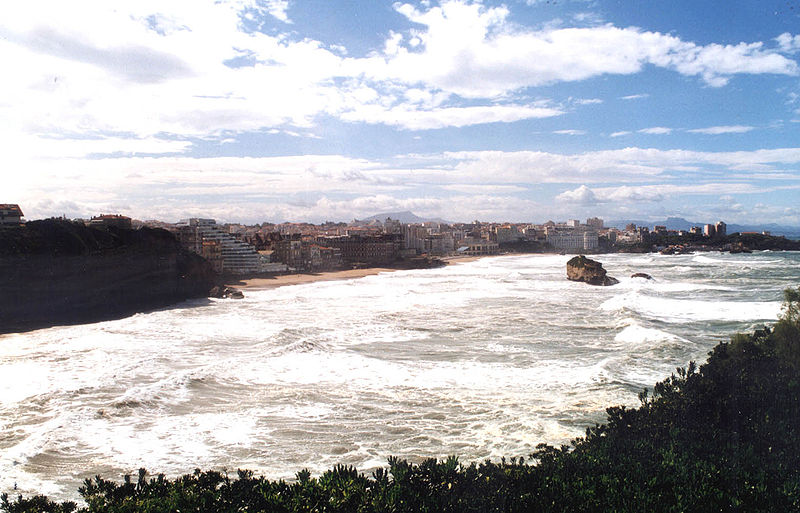|
Mário Simões Dias
Mário Simões Dias de Figueiredo (2 July 1903 in Coimbra – 8 July 1974 in Lourenço Marques) was a Portuguese musicologist and professional violinist (a disciple of Lucien Capet and collaborator of Fernando Lopes Graça, among others), as well as a prolific music critic and poet. He was blind from the age of 10.''Mário Simões Dias'', entry in ''Dicionário de Música'' (Lisboa: Edições Cosmos, 1958), vol. ''I-Z'', p. 552 As an academic affiliated with the University of Coimbra, he authored works on music theory and the history of music as well as introductory texts concerned with raising public awareness of classical music; his collection of essays ''A Música, essa desconhecida'' became a popular introduction to music history in Portugal.Simões Dias, M. ''A Música, essa desconhecida'' (Coimbra, Centro Universitário de Coimbra da Mocidade Portuguesa, 1951entry at Biblioteca Nacional de Portugal (Portuguese)/ref>''Mário Simões Dias'', entry in ''Dicionário de Mús ... [...More Info...] [...Related Items...] OR: [Wikipedia] [Google] [Baidu] |
Coimbra
Coimbra (, also , , or ) is a city and a municipality in Portugal. The population of the municipality at the 2011 census was 143,397, in an area of . The fourth-largest urban area in Portugal after Lisbon, Porto Metropolitan Area, Porto, and Braga, it is the largest city of the Coimbra (district), district of Coimbra and the Centro Region, Portugal, Centro Region. About 460,000 people live in the Região de Coimbra, comprising 19 municipalities and extending into an area of . Among the many archaeological structures dating back to the Roman Empire, Roman era, when Coimbra was the settlement of Aeminium, are its well-preserved aqueduct (watercourse), aqueduct and cryptoporticus. Similarly, buildings from the period when Coimbra was the capital of Portugal (from 1131 to 1255) still remain. During the late Middle Ages, with its decline as the political centre of the Kingdom of Portugal, Coimbra began to evolve into a major cultural centre. This was in large part helped by the establ ... [...More Info...] [...Related Items...] OR: [Wikipedia] [Google] [Baidu] |
Beira (Portugal)
Beira () was one of the six traditional provinces or ''comarcas'' of Portugal. The territorial extension is different from that of the area called ''the Beiras'', which refers to three provinces of 1936, Beira Alta, Beira Baixa and Beira Litoral. Geography The most important cities within the borders of the traditional province are: Coimbra, Aveiro, Leiria, Viseu, Castelo Branco, Guarda, Figueira da Foz, Covilhã and Pinhel. The main river is the Mondego; other rivers include the Vouga, Dão, Côa, Zêzere and Paiva. The largest mountain range is Serra da Estrela – Continental Portugal's highest – other ranges being the Caramulo, Marofa, Gardunha, and Bussaco. Administrative history After the 15th Century, the new Kingdom of Portugal was divided into six great administrative units, referred to as comarcas. Since the Middle Ages there existed the Beira Province. 1832 In 1832 this province was divided into * Beira Alta * Beira Baixa 1936 In 1936 these were ... [...More Info...] [...Related Items...] OR: [Wikipedia] [Google] [Baidu] |
University Of Strasbourg
The University of Strasbourg (french: Université de Strasbourg, Unistra) is a public research university located in Strasbourg, Alsace, France, with over 52,000 students and 3,300 researchers. The French university traces its history to the earlier German-language ''Universität Straßburg'', which was founded in 1538, and was divided in the 1970s into three separate institutions: Louis Pasteur University, Marc Bloch University, and Robert Schuman University. On 1 January 2009, the fusion of these three universities reconstituted a united University of Strasbourg. With as many as 19 Nobel laureates, and two Fields Medal winners, the university is ranked among the best in the League of European Research Universities. History The university emerged from a Lutheran humanist German Gymnasium, founded in 1538 by Johannes Sturm in the Free Imperial City of Strassburg. It was transformed to a university in 1621 (german: Universität Straßburg) and elevated to the ranks of a royal u ... [...More Info...] [...Related Items...] OR: [Wikipedia] [Google] [Baidu] |
Theory Of Music
Music theory is the study of the practices and possibilities of music. ''The Oxford Companion to Music'' describes three interrelated uses of the term "music theory". The first is the "rudiments", that are needed to understand music notation (key signatures, time signatures, and rhythmic notation); the second is learning scholars' views on music from antiquity to the present; the third is a sub-topic of musicology that "seeks to define processes and general principles in music". The musicological approach to theory differs from music analysis "in that it takes as its starting-point not the individual work or performance but the fundamental materials from which it is built." Music theory is frequently concerned with describing how musicians and composers make music, including tuning systems and composition methods among other topics. Because of the ever-expanding conception of what constitutes music, a more inclusive definition could be the consideration of any sonic phenomena, i ... [...More Info...] [...Related Items...] OR: [Wikipedia] [Google] [Baidu] |
History Of Music
Although definitions of music vary wildly throughout the world, every known culture partakes in it, and it is thus considered a cultural universal. The origins of music remain highly contentious; commentators often relate it to the origin of language, with much disagreement surrounding whether music arose before, after or simultaneously with language. Many theories have been proposed by scholars from a wide range of disciplines, though none have achieved broad approval. Most cultures have their own mythical origins concerning the invention of music, generally rooted in their respective mythological, religious or philosophical beliefs. The music of prehistoric cultures is first firmly dated to BP of the Upper Paleolithic by evidence of bone flutes, though it remains unclear whether or not the actual origins lie in the earlier Middle Paleolithic period (300,000 to 50,000 BP). There is little known about prehistoric music, with traces mainly limited to some simple ... [...More Info...] [...Related Items...] OR: [Wikipedia] [Google] [Baidu] |
Le Courrier
''Le Courrier'' (literally "The Mail") is a Swiss French-language daily newspaper published in Geneva. Founded on 5 January 1868, it was originally supported by the Roman Catholic Church, but has been completely independent since 1996. Mainly focused on Geneva, the newspaper is trying to expand into other cantons in Romandy. See also * List of newspapers in Switzerland The number of newspapers in Switzerland was 406 before World War I. It reduced to 257 in 1995. The country was ranked fifteenth for 2014 in the yearly Press Freedom Index published by Reporters Without Borders and 8th in 2020. List Below is a ... References External links lecourrier.ch(in French), the newspaper's official website 1868 establishments in Switzerland Newspapers published in Geneva Daily newspapers published in Switzerland French-language newspapers published in Switzerland Newspapers established in 1868 Christianity in Geneva [Baidu] |
Biarritz
Biarritz ( , , , ; Basque also ; oc, Biàrritz ) is a city on the Bay of Biscay, on the Atlantic coast in the Pyrénées-Atlantiques department in the French Basque Country in southwestern France. It is located from the border with Spain. It is a luxurious seaside tourist destination known for the Hôtel du Palais (originally built for the Empress Eugénie circa 1855), its casinos in front of the sea and its surfing culture. Geography Biarritz is located in the Pyrénées-Atlantiques department in the Nouvelle-Aquitaine region. It is part of the arrondissement of Bayonne. It is adjacent to Bayonne and Anglet and from the border with Spain. It is in the traditional province of Labourd in the French Basque Country. Gallery File:Édouard_Zier_-_Les_baigneuses_à_Biarritz.jpg, ''Les baigneuses à Biarritz'', by Édouard François Zier File:Biarritz1999.jpg, Biarritz from the Pointe Saint-Martin. File:Grande Plage de Biarritz.jpg, ''La Grande Plage'', the town's largest b ... [...More Info...] [...Related Items...] OR: [Wikipedia] [Google] [Baidu] |
Le Figaro
''Le Figaro'' () is a French daily morning newspaper founded in 1826. It is headquartered on Boulevard Haussmann in the 9th arrondissement of Paris. The oldest national newspaper in France, ''Le Figaro'' is one of three French newspapers of record, along with ''Le Monde'' and ''Libération''. It was named after Figaro, a character in a play by polymath Beaumarchais (1732–1799); one of his lines became the paper's motto: "''Sans la liberté de blâmer, il n'est point d'éloge flatteur''" ("Without the freedom to criticise, there is no flattering praise"). With a centre-right editorial line, it is the largest national newspaper in France, ahead of ''Le Parisien'' and ''Le Monde''. In 2019, the paper had an average circulation of 321,116 copies per issue. The paper is published in Berliner format. Since 2012 its editor (''directeur de la rédaction'') has been Alexis Brézet. The newspaper has been owned by Dassault Group since 2004. Other Groupe Figaro publications include ''Le ... [...More Info...] [...Related Items...] OR: [Wikipedia] [Google] [Baidu] |
Salle Pleyel
The Salle Pleyel (, meaning "Pleyel Hall") is a concert hall in the 8th arrondissement of Paris, France, designed by acoustician Gustave Lyon together with architect Jacques Marcel Auburtin, who died in 1926, and the work was completed in 1927 by his collaborators André Granet and Jean-Baptiste Mathon. Its varied programme includes contemporary and popular music. Until 2015, the hall was a major venue for classical orchestral music, with Orchestre de Paris and the Orchestre Philharmonique de Radio France as resident ensembles. Early history An earlier salle Pleyel seating 300 opened in December 1839 at 22 rue Rochechouart. From 1849 to 1869, impresario Charlotte Tardieu organized four chamber concerts a year at the hall. It saw the premieres of many important works, including Chopin's Ballade Op.38 and Scherzo Op.39 (April 26, 1841), Ballade Op.47 (February 21, 1842) and Barcarolle Op.60 (February 16, 1848), the second (1868) and fifth (1896) piano concertos by Saint-Saë ... [...More Info...] [...Related Items...] OR: [Wikipedia] [Google] [Baidu] |
Lisbon
Lisbon (; pt, Lisboa ) is the capital and largest city of Portugal, with an estimated population of 544,851 within its administrative limits in an area of 100.05 km2. Grande Lisboa, Lisbon's urban area extends beyond the city's administrative limits with a population of around 2.7 million people, being the List of urban areas of the European Union, 11th-most populous urban area in the European Union.Demographia: World Urban Areas - demographia.com, 06.2021 About 3 million people live in the Lisbon metropolitan area, making it the third largest metropolitan area in the Iberian Peninsula, after Madrid and Barcelona. It represents approximately 27% of the country's population. [...More Info...] [...Related Items...] OR: [Wikipedia] [Google] [Baidu] |
Meningitis
Meningitis is acute or chronic inflammation of the protective membranes covering the brain and spinal cord, collectively called the meninges. The most common symptoms are fever, headache, and neck stiffness. Other symptoms include confusion or altered consciousness, nausea, vomiting, and an inability to tolerate light or loud noises. Young children often exhibit only nonspecific symptoms, such as irritability, drowsiness, or poor feeding. A non-blanching rash (a rash that does not fade when a glass is rolled over it) may also be present. The inflammation may be caused by infection with viruses, bacteria or other microorganisms. Non-infectious causes include malignancy (cancer), subarachnoid haemorrhage, chronic inflammatory disease (sarcoidosis) and certain drugs. Meningitis can be life-threatening because of the inflammation's proximity to the brain and spinal cord; therefore, the condition is classified as a medical emergency. A lumbar puncture, in which a needle is inserte ... [...More Info...] [...Related Items...] OR: [Wikipedia] [Google] [Baidu] |


.jpg)





